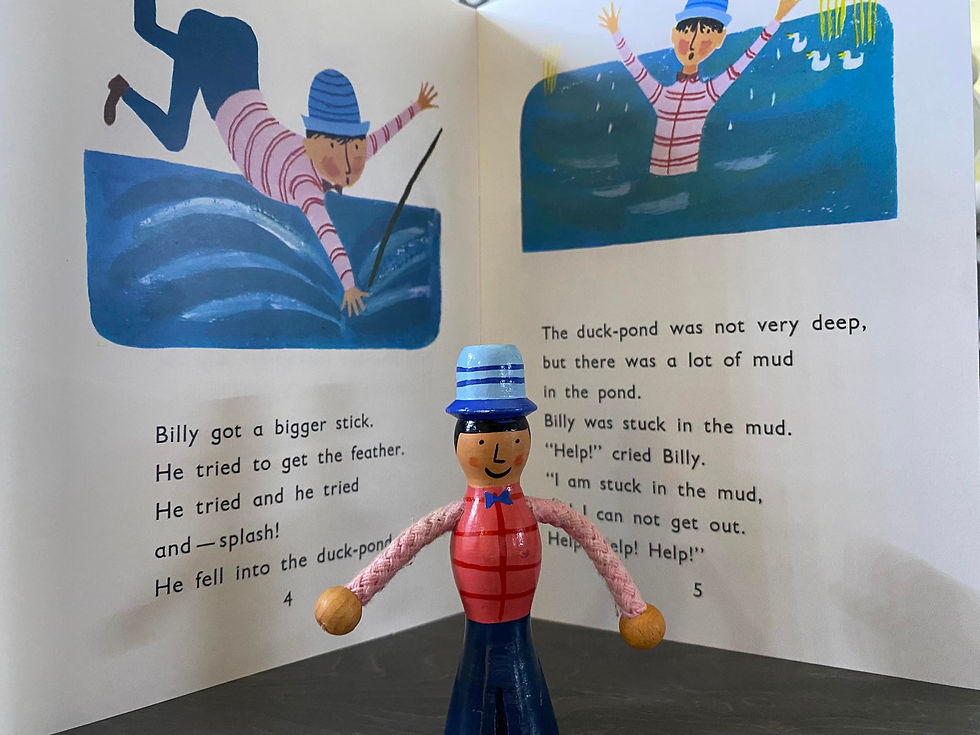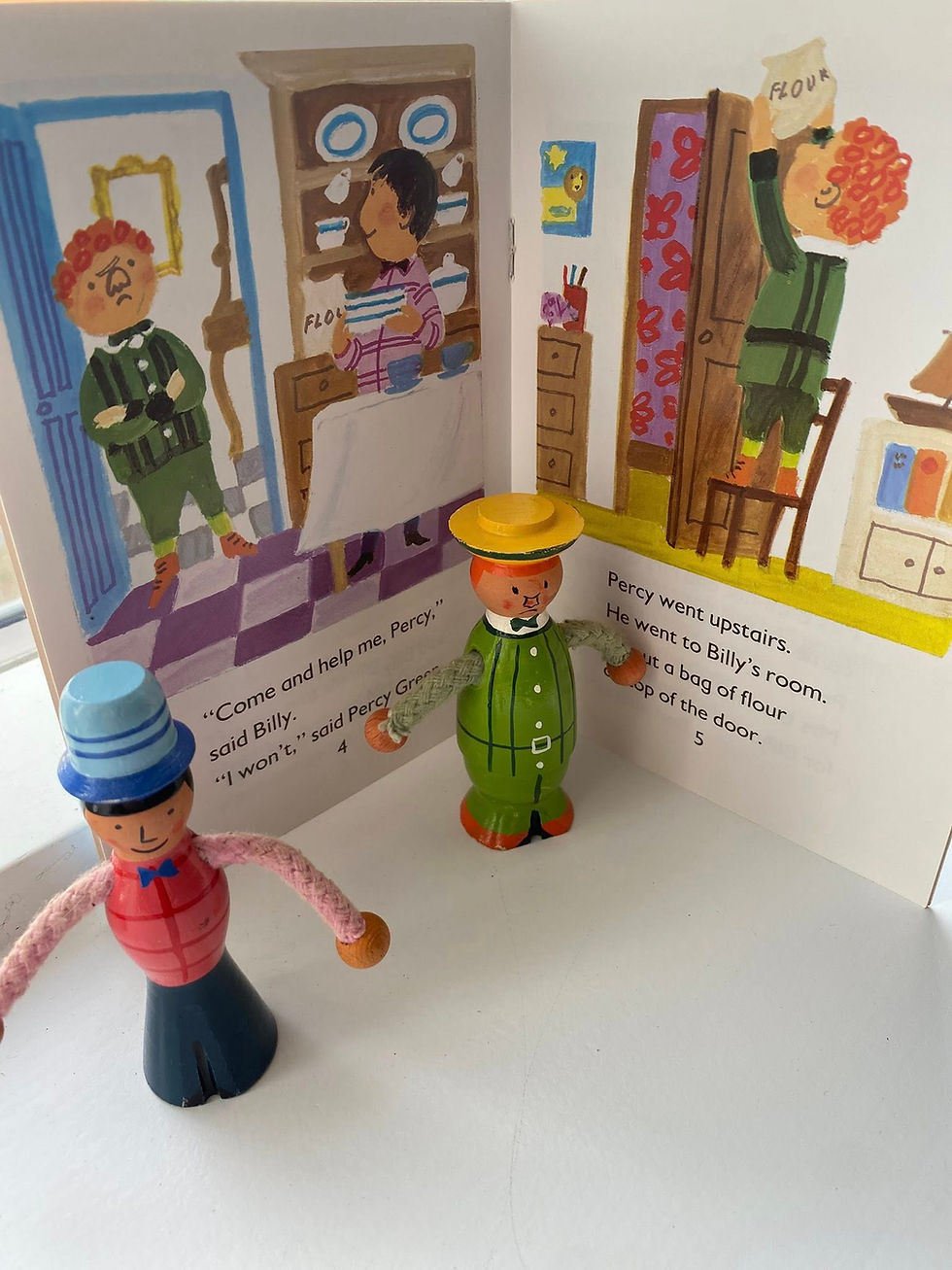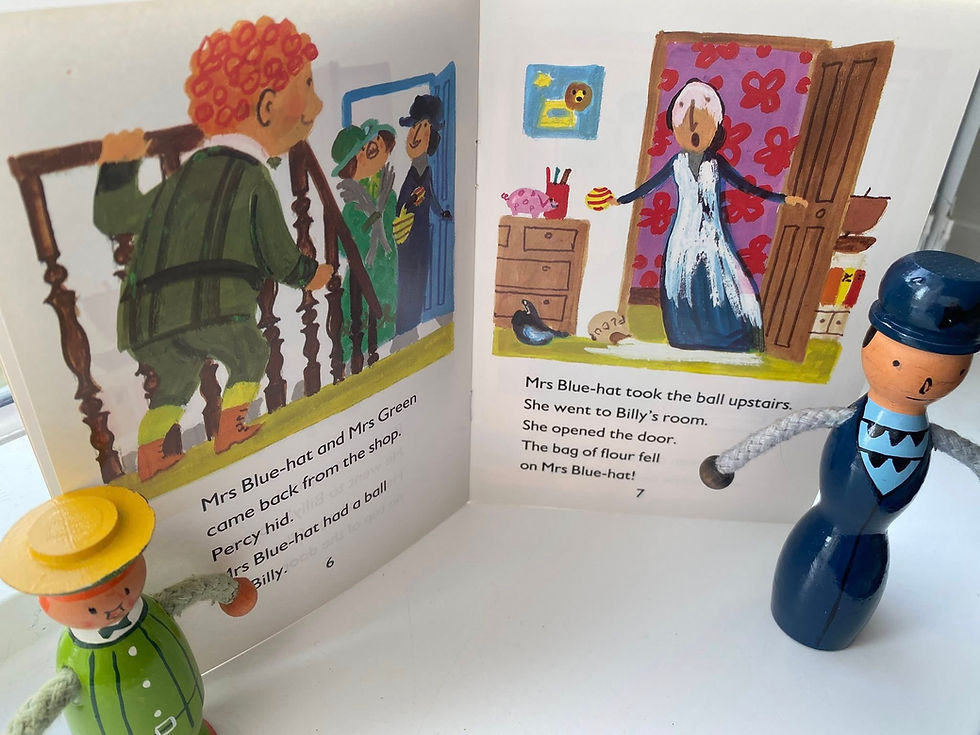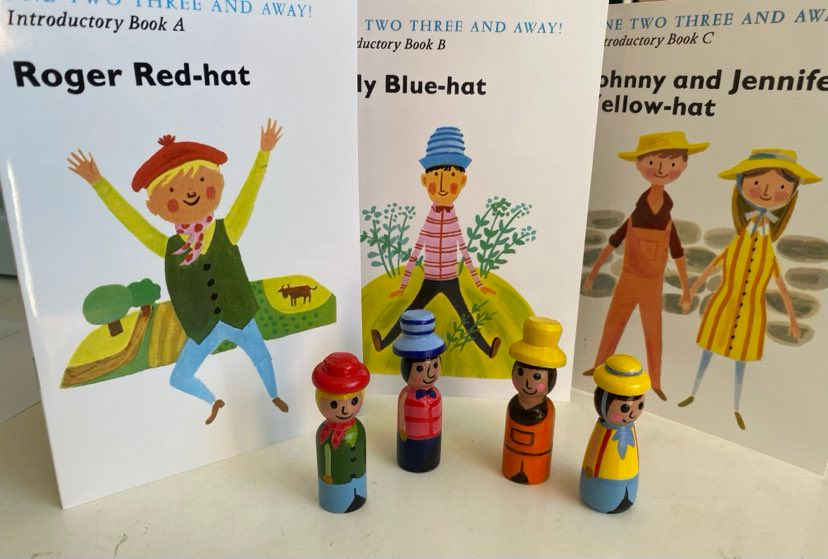The Magic of Learning to Read with The Village With Three Corners
- The Reading Hut Ltd

- Jul 22
- 3 min read
Let’s Bring Back the Magic of Reading
Once upon a time, reading was one of the most magical parts of childhood. Books were written to spark the imagination, and children would become immersed in the worlds that unfolded on each page. We loved stories that made us laugh, we formed attachments to the characters, and we talked excitedly about what might happen next.

Sheila McCullagh was not a teacher. She was a writer. But she did something extraordinary, something no one else had done before or since. She created a reading ‘scheme’ that allowed at least 80 to 85 percent of children to learn to read without losing the reason they wanted to read in the first place.
She created 'real' children, not perfect children. Percy Green gets up to mischief!


Her books were written so that children could access print without being bored by it. The stories were interesting, the characters were endearing, and children wanted to keep turning the page. This is something that is sadly missing today. In fact, a Year of Reading is now being launched in England because reading for pleasure has dropped to its lowest level since the synthetic phonics reforms introduced by Jim Rose. These reforms were radical. No other country chose to follow the same path. Since 2016, around one in four children in England have been unable to read properly by age 11.
Please don’t follow, Australia.
The only children who would struggle with The Village with Three Corners scheme (One, Two, Three and Away!) are those with poor phonemic awareness, because they can’t phonologically recode words. This is like decoding backwards. Rather than first knowing the graphemes and blending them into spoken words, children who already know the word can map backwards from speech. It is spelling to reading. Speech to print. Any child with good phonemic awareness, who can isolate, segment and blend phonemes (speech sounds), can learn to read with this scheme.
It is also important to point out that most children who struggle with phonemic awareness will struggle with synthetic phonics programmes too. The difference is, they are far more motivated to try when reading The Village with Three Corners. The stories give them a reason to persevere.

To identify which children may need extra support, you can use the free ten-day Phonemic Awareness Plan at speechsoundplay.com. It helps you to screen for gaps and build those essential skills. Children learn the Speech Sound Monster Sounds (Phonemies)
Once those foundations are in place, they can make progress with synthetic phonics programmes too. But you still have to address the issue of motivation. Children need a reason to want to read.
You should still use a systematic phonics programme, hopefully choosing mine, for around 30 minutes each day. That time is used for structured print-to-speech routines, such as blending /s/, /a/, /t/, /p/, /i/, /n/ in different combinations. You can also introduce some high-frequency words, to create simple sentences to read and write like “Stan sits in a pan.” In this example, a is the high-frequency word.
But for children who already have phonemic awareness, you can also begin using the pre-readers right away. The first 52 books are orthographically mapped, with Phonemies, so children can connect speech sounds to letters while enjoying rich language and engaging stories.
To give every child the best chance, I suggest introducing the books once children are confident with the SSP Green and Purple Level GPCs. At that stage, they are usually secure with blending, which makes it easier to blend the Phonemies too.
These books are magical. They remind children why we are teaching them to read. Not just to decode words, but to fall in love with reading itself.
Let’s centre everything around that. Not as something we hope will happen after they’ve learned phonics, but as the very reason we teach children to read in the first place.
Miss Emma x




Comments